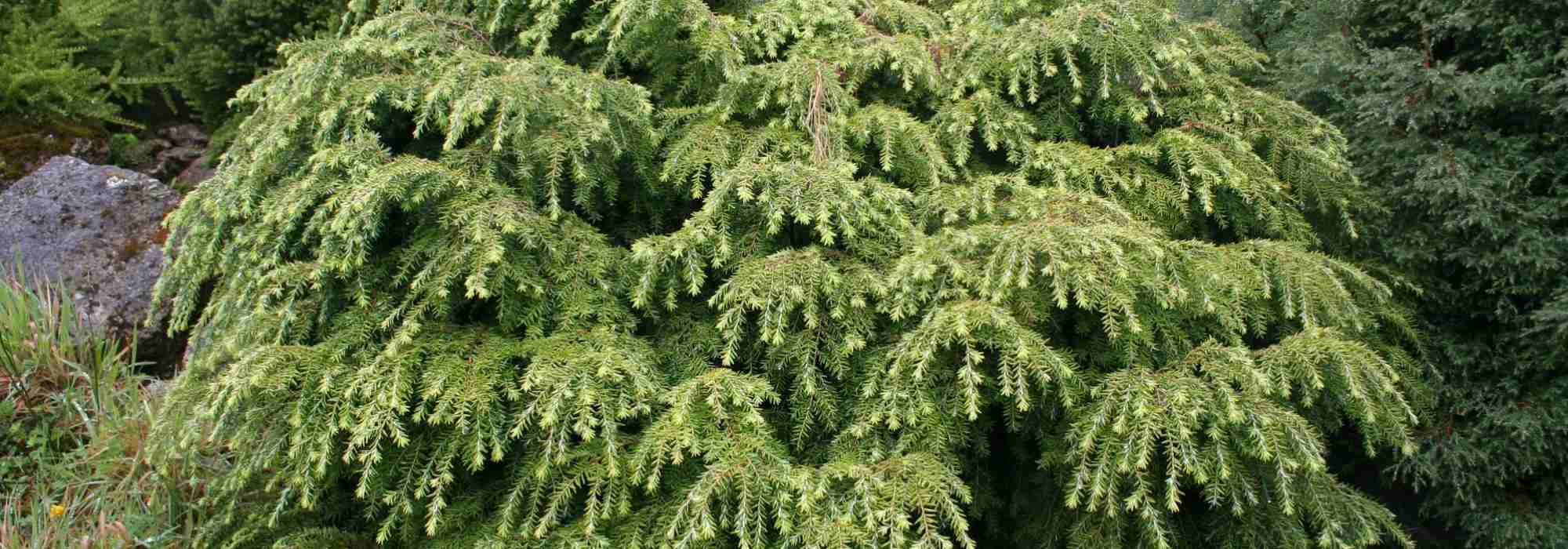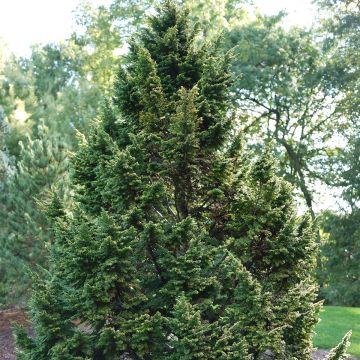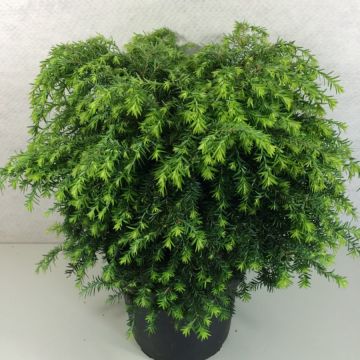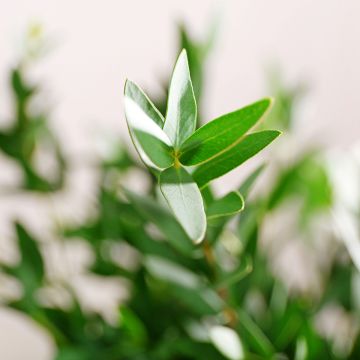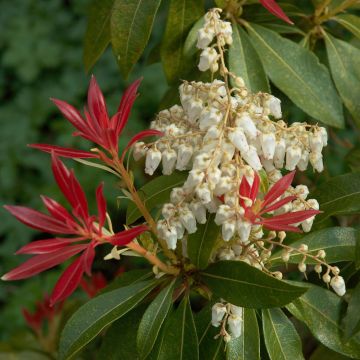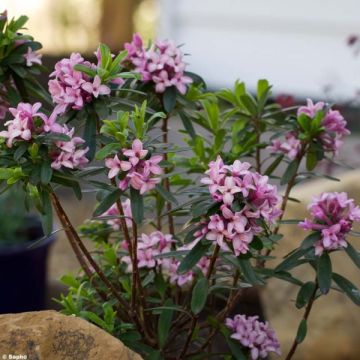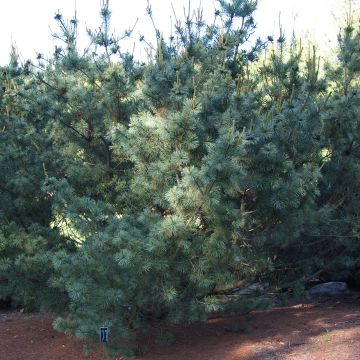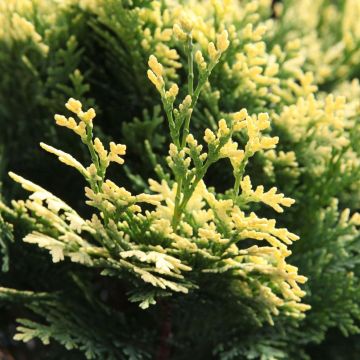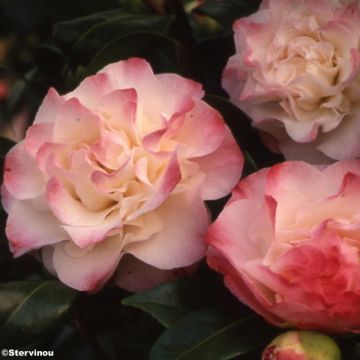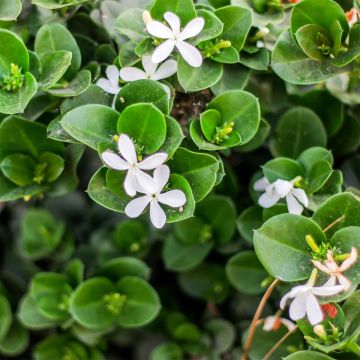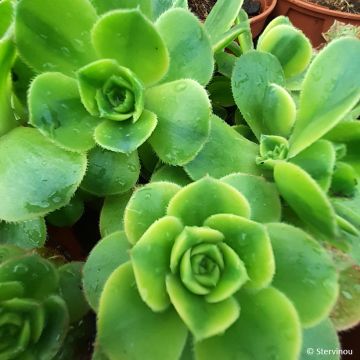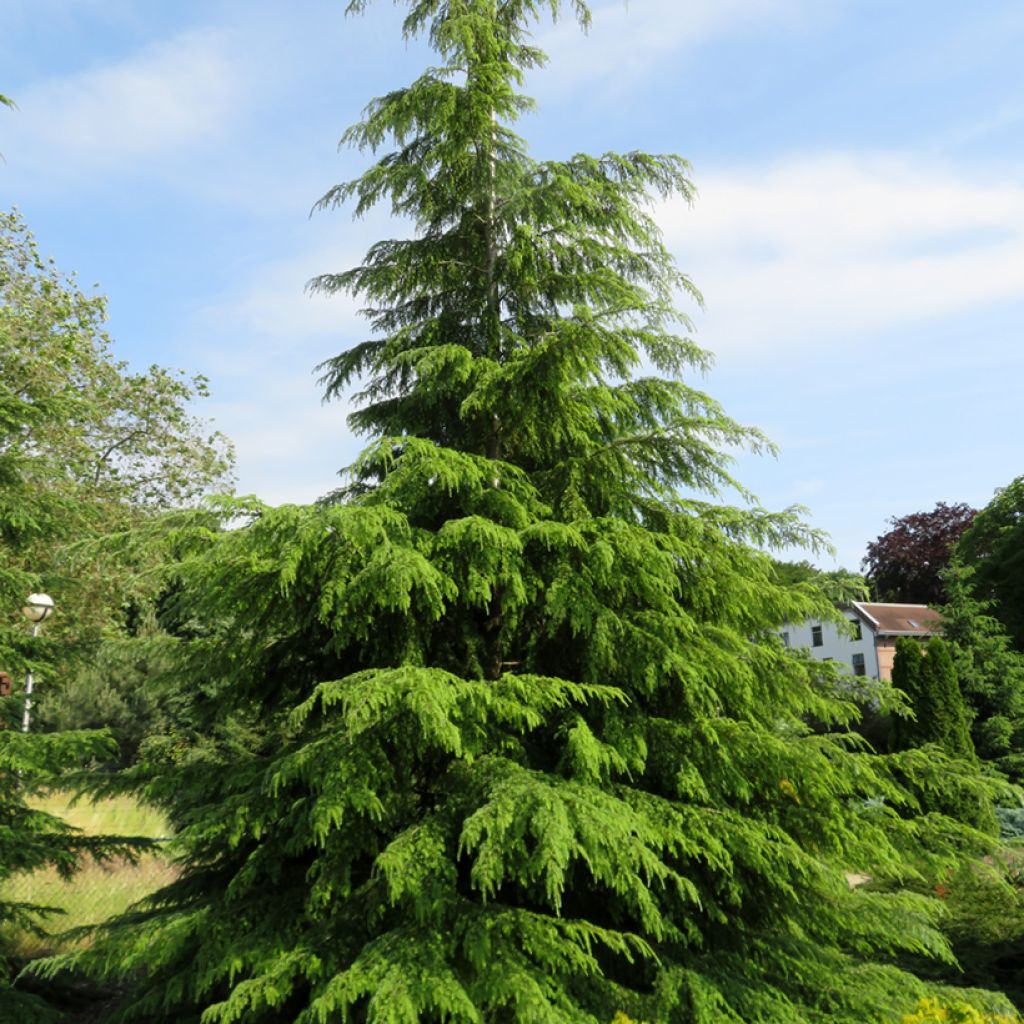

Tsuga heterophylla - Western Hemlock
Tsuga heterophylla - Western Hemlock
Tsuga heterophylla
Western Hemlock, Pacific Hemlock, West Coast Hemlock
Special offer!
Receive a €20 voucher for any order over €90 (excluding delivery costs, credit notes, and plastic-free options)!
1- Add your favorite plants to your cart.
2- Once you have reached €90, confirm your order (you can even choose the delivery date!).
3- As soon as your order is shipped, you will receive an email containing your voucher code, valid for 3 months (90 days).
Your voucher is unique and can only be used once, for any order with a minimum value of €20, excluding delivery costs.
Can be combined with other current offers, non-divisible and non-refundable.
Home or relay delivery (depending on size and destination)
Schedule delivery date,
and select date in basket
This plant carries a 24 months recovery warranty
More information
We guarantee the quality of our plants for a full growing cycle, and will replace at our expense any plant that fails to recover under normal climatic and planting conditions.
Would this plant suit my garden?
Set up your Plantfit profile →
Description
The Western Hemlock or Tsuga heterophylla is a beautiful evergreen tree native to America, which, in its native range, reaches considerable sizes and represents an important source of wood, especially for the paper industry. This powerful and graceful conifer has an open pyramidal crown with sparse horizontal branches. The flexible and light branches bear short, soft needles with rounded tips in a vibrant dark green colour. The tree becomes more slender over time, starting wide in its youth. It can thrive in all exposures, in cool and well-drained soil, neutral to acidic.
The Western Hemlock, also known as California Hemlock, Western Hemlock or New World Hemlock, is a tree species belonging to the Pinaceae family. Its natural distribution extends along the west coast of North America, from Alaska to California. Its distribution coincides with temperate rainforests; its entire range is within 100 kilometres of the west coast. It was introduced to Europe in 1851. It is cultivated in Western Europe for its wood, but it succumbs to severe cold in Central Europe and is only planted for ornamental purposes in parks. Although it is a climax species of old and mature forests, it exhibits some versatility in ecological resilience, particularly in its ability to recolonise damaged sites. This conifer reaches considerable sizes of 50 to 70 metres in height in its native habitat and exceptionally up to 2.7 metres in trunk diameter. It will reach 20 to 30 metres in height, and its crown will be 8 to 12 metres wide. Its thick, channelled bark is reddish-brown and darkens to grey over time. It has rapid growth, with sparse branches forming an open crown. The branches spread horizontally and have few lateral branches—their tips droop. The young branches are also strongly drooping. They are brown-yellow and pubescent. The blunt needles have finely toothed edges. The upper surface is shiny, dark green. The lower surface is covered with two rows of white-grey stomata. After inconspicuous flowering, short pedunculate and pendulous cones appear. The female cones, 20 to 25 mm in size, have rounded scales that are distinctly longer than wide.
Thriving in partial shade, this species also appreciates moist soils. The Tsuga heterophylla can grow in all exposures. It thrives in acidic to neutral, well-drained soil and requires moderate watering. This large tree with a wide crown is best suited for large spaces.
Tsuga heterophylla - Western Hemlock in pictures
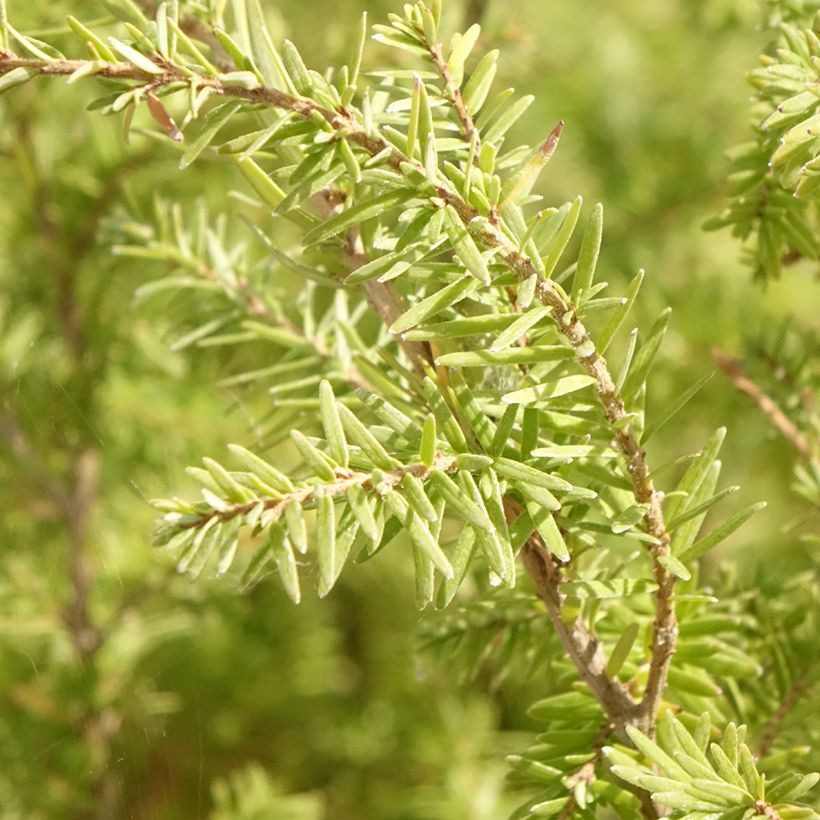

Plant habit
Foliage
Botanical data
Tsuga
heterophylla
Pinaceae
Western Hemlock, Pacific Hemlock, West Coast Hemlock
Tsuga jeffreyi, Abies heterophylla, Abies albertiana
North America
Other Tsuga
View all →Planting and care
The Tsuga heterophylla is planted from September to November and from February to April in fertile, moisture-retaining, well-drained, neutral to slightly acidic soil (tolerated pH range of 5 to 7; this tree does not like limestone). It prefers humus-bearing or loamy-clayey, fresh, acidic soils. Choose a sunny, semi-shaded, or shaded location. Soak the root ball in a bucket for twenty minutes before planting to saturate it with water thoroughly. Add organic amendments to planting and water generously for the first three years, especially during prolonged droughts. Apply a special conifer fertiliser every year in April and cultivate the soil in summer. This hardy conifer (down to at least -30°C) fears scorching sun, heatwaves, and dry and poor soils.
Planting period
Intended location
Care
Planting & care advice
This item has not been reviewed yet - be the first to leave a review about it.
Similar products
Haven't found what you were looking for?
Hardiness is the lowest winter temperature a plant can endure without suffering serious damage or even dying. However, hardiness is affected by location (a sheltered area, such as a patio), protection (winter cover) and soil type (hardiness is improved by well-drained soil).

Photo Sharing Terms & Conditions
In order to encourage gardeners to interact and share their experiences, Promesse de fleurs offers various media enabling content to be uploaded onto its Site - in particular via the ‘Photo sharing’ module.
The User agrees to refrain from:
- Posting any content that is illegal, prejudicial, insulting, racist, inciteful to hatred, revisionist, contrary to public decency, that infringes on privacy or on the privacy rights of third parties, in particular the publicity rights of persons and goods, intellectual property rights, or the right to privacy.
- Submitting content on behalf of a third party;
- Impersonate the identity of a third party and/or publish any personal information about a third party;
In general, the User undertakes to refrain from any unethical behaviour.
All Content (in particular text, comments, files, images, photos, videos, creative works, etc.), which may be subject to property or intellectual property rights, image or other private rights, shall remain the property of the User, subject to the limited rights granted by the terms of the licence granted by Promesse de fleurs as stated below. Users are at liberty to publish or not to publish such Content on the Site, notably via the ‘Photo Sharing’ facility, and accept that this Content shall be made public and freely accessible, notably on the Internet.
Users further acknowledge, undertake to have ,and guarantee that they hold all necessary rights and permissions to publish such material on the Site, in particular with regard to the legislation in force pertaining to any privacy, property, intellectual property, image, or contractual rights, or rights of any other nature. By publishing such Content on the Site, Users acknowledge accepting full liability as publishers of the Content within the meaning of the law, and grant Promesse de fleurs, free of charge, an inclusive, worldwide licence for the said Content for the entire duration of its publication, including all reproduction, representation, up/downloading, displaying, performing, transmission, and storage rights.
Users also grant permission for their name to be linked to the Content and accept that this link may not always be made available.
By engaging in posting material, Users consent to their Content becoming automatically accessible on the Internet, in particular on other sites and/or blogs and/or web pages of the Promesse de fleurs site, including in particular social pages and the Promesse de fleurs catalogue.
Users may secure the removal of entrusted content free of charge by issuing a simple request via our contact form.
The flowering period indicated on our website applies to countries and regions located in USDA zone 8 (France, the United Kingdom, Ireland, the Netherlands, etc.)
It will vary according to where you live:
- In zones 9 to 10 (Italy, Spain, Greece, etc.), flowering will occur about 2 to 4 weeks earlier.
- In zones 6 to 7 (Germany, Poland, Slovenia, and lower mountainous regions), flowering will be delayed by 2 to 3 weeks.
- In zone 5 (Central Europe, Scandinavia), blooming will be delayed by 3 to 5 weeks.
In temperate climates, pruning of spring-flowering shrubs (forsythia, spireas, etc.) should be done just after flowering.
Pruning of summer-flowering shrubs (Indian Lilac, Perovskia, etc.) can be done in winter or spring.
In cold regions as well as with frost-sensitive plants, avoid pruning too early when severe frosts may still occur.
The planting period indicated on our website applies to countries and regions located in USDA zone 8 (France, United Kingdom, Ireland, Netherlands).
It will vary according to where you live:
- In Mediterranean zones (Marseille, Madrid, Milan, etc.), autumn and winter are the best planting periods.
- In continental zones (Strasbourg, Munich, Vienna, etc.), delay planting by 2 to 3 weeks in spring and bring it forward by 2 to 4 weeks in autumn.
- In mountainous regions (the Alps, Pyrenees, Carpathians, etc.), it is best to plant in late spring (May-June) or late summer (August-September).
The harvesting period indicated on our website applies to countries and regions in USDA zone 8 (France, England, Ireland, the Netherlands).
In colder areas (Scandinavia, Poland, Austria...) fruit and vegetable harvests are likely to be delayed by 3-4 weeks.
In warmer areas (Italy, Spain, Greece, etc.), harvesting will probably take place earlier, depending on weather conditions.
The sowing periods indicated on our website apply to countries and regions within USDA Zone 8 (France, UK, Ireland, Netherlands).
In colder areas (Scandinavia, Poland, Austria...), delay any outdoor sowing by 3-4 weeks, or sow under glass.
In warmer climes (Italy, Spain, Greece, etc.), bring outdoor sowing forward by a few weeks.






























